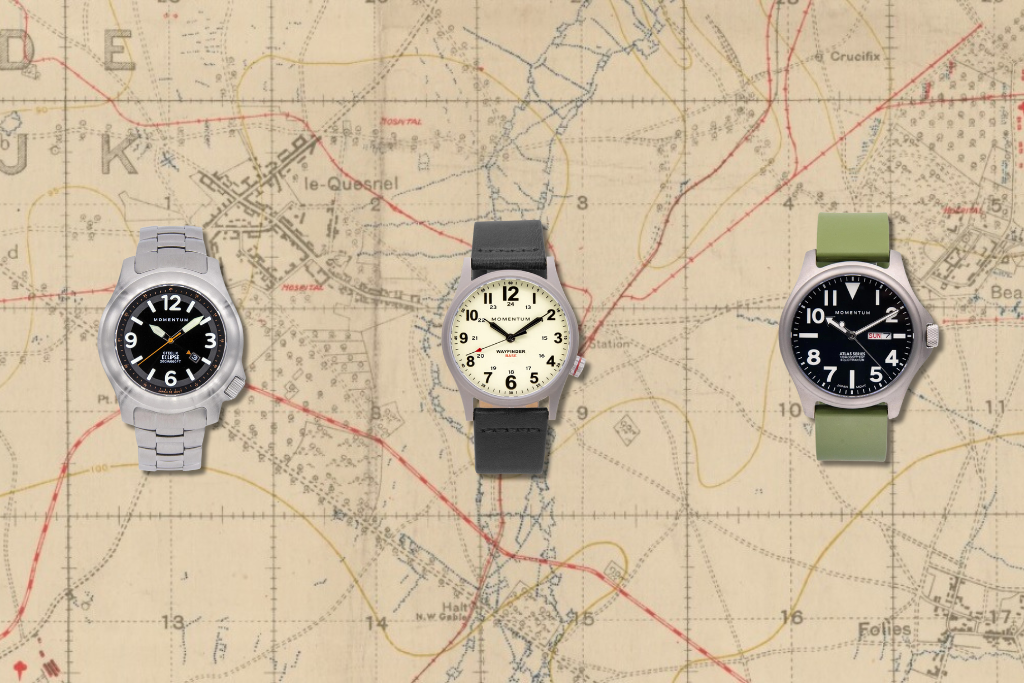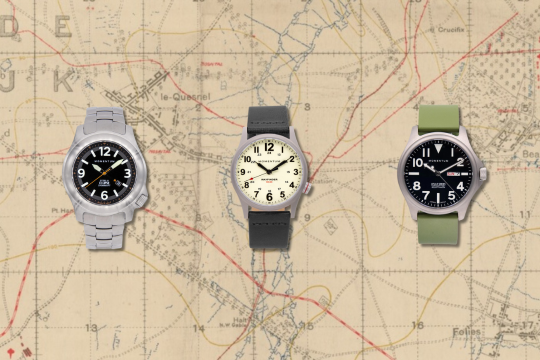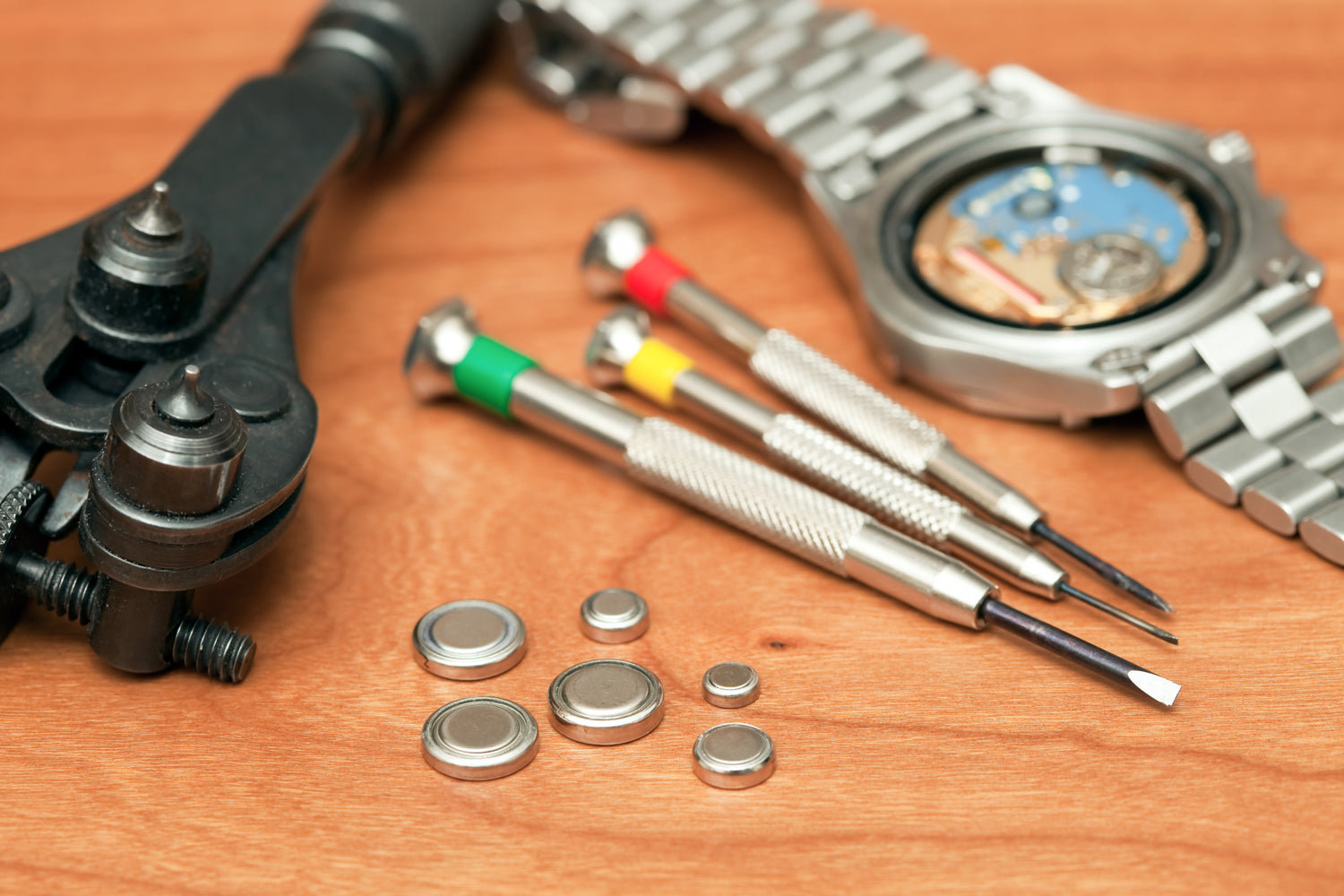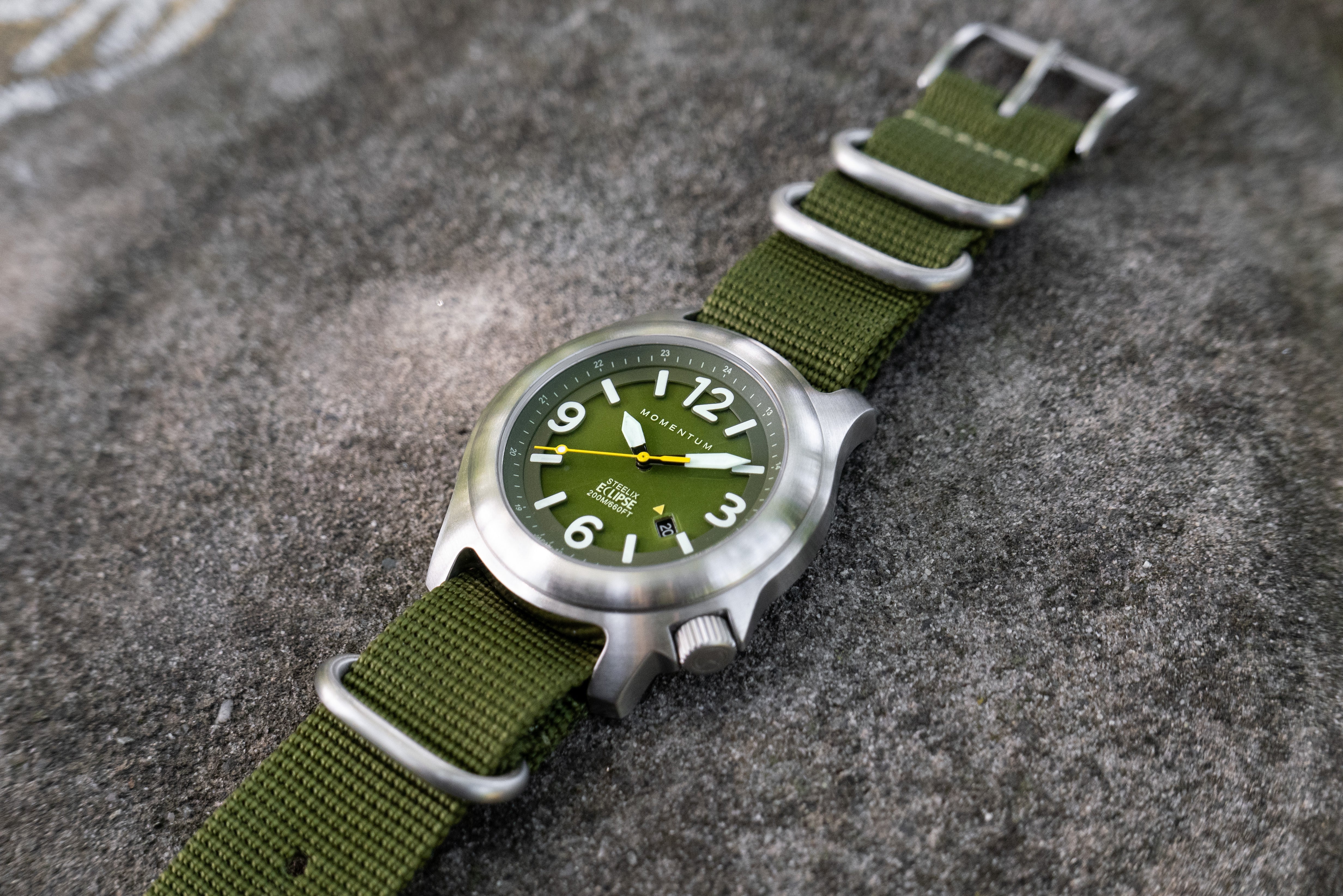
From a military tool to a must-have modern accessory.
An important tool for soldiers dating back to before World War I, the field watch is today more likely to be found on the wrists of ruggedly fashionable civilians and outdoor enthusiasts. While different designs are called “Field” watches, they all share a few features: Ultra-legible dials; high contrast, luminous displays that can be read in poor light; shock resistance and durability; exceptional water-resistance; and simple, functional designs. Pocketwatches were the norm for men in the late 1800s and early 1900s and were typically kept in the pocket of a vest or waistcoat. In the late 1800’s the first devices for strapping watches onto wrists were developed and marketed as “wristlets”. In 1903, Dimier Frères & Cie. of Switzerland was issued a patent for a “watch case with attached lugs to hold the wrist strap”. Early wristwatches were favored by women and typically had jewelled and dainty cases. Men preferred pocketwatches.
|
|
During the Boer War (1899-1902) and World War I (1914-1918), wristwatches became popular with soldiers. Pocket watches were not practical in combat, so watch companies designed “trench” wristlets, or wristwatches, allowing soldiers to synchronize their movements with the timing of planned artillery bombardments behind them, and saving lives. After the wars ended, they became popular with civilians, as servicemen continued to use their watches for activities like hiking, hunting, fishing, cycling, and driving
 Capt. Thorpe dial Trench Watch ca 1914 |
While Field Watch designs did vary, from more basic designs to complicated models with metal “cages” or lids (to prevent the glass from breaking), all had functional cases, legible designs, visible hands, and prominent numbers or indexes, for easy legibility at-a-glance.
 Military watch with “cage” lid Military watch with “cage” lidca 1915 |
A book published during World War I, as early as 1916 “Knowledge for War: Every Officer’s Handbook for the Front” by Captain B. C. Lake of the King’s Own Scottish Borderers included a list of Officer’s Kit. The first item on the list, ahead of otherwise indispensable items such as “Revolver” and “Field glasses” is a “Luminous" wristwatch with unbreakable glass”. A clear, legible display, the presence of luminous paint and a tough break-resistant crystal became the signature features of a trench or “Service” watch, and featured prominently in adverts during the war.
 Gold Trench Watch w Lid
ca 1916
|
In 1919, Hans Wilsdorf moved Rolex from London to Switzerland. He pioneered waterproof watches with his Oyster case, and in 1949, started Tudor, to offer similarly rugged watches at more affordable prices. As society became less Victorian and stiff, vests (waistcoats) lost popularity, fashion became more casual and sporty, and people were increasingly enthusiastic about the great outdoors, Field Watches became a symbol of one’s ruggedness and bravery.
 Rolex Oyster Explorer ca 1953 |
Fast forward to today, and the features that made Field Watches so popular 100 years ago resonate with a whole new audience. Don’t get us wrong, we love smartwatches with their hundreds of different functions and apps, but many people still value a watch that looks good on the beach or in the boardroom, shows the time at a glance, requires no software updates, and will not stop if you forget to charge it every night. Momentum Field watches fall into two main categories: Ultra-light or Heavy-duty. The lighter models are part of our ATLAS Series and are mostly made of solid titanium. They are so light that you will barely notice them on your wrist. Heavy-duty models like our STEELIX Field watch, are made of solid 316L stainless steel, so they are a little heavier but are just as rock-solid and robust. They all feature exceptional waterproof performance with screw-down crowns, luminous dials & hands that offer great legibility at a glance and features like sapphire crystals that are almost impossible to scratch. Most importantly, they offer outstanding features and performance for your money. Outside Magazine’s prestigious Gear Guide called our STEELIX model, a “KILLER VALUE”. Our latest Eclipse Solar models come with a 6-year warranty and offer an even stronger value proposition, charging in any light and eliminating the cost and inconvenience of regular battery changes. They not only result in a lot fewer batteries ending up in our landfills, but they also come with a great 6-year limited warranty and a wide range of top-quality bands.






Leave a comment
This site is protected by hCaptcha and the hCaptcha Privacy Policy and Terms of Service apply.